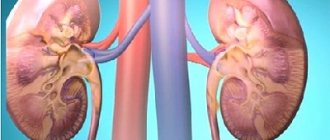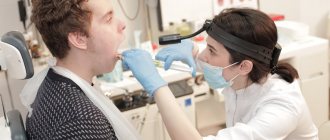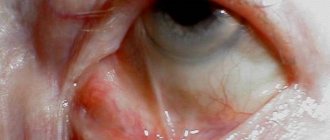Hemorrhagic fever with renal syndrome (HFRS) is a viral zoonotic (source of infection is an animal) disease, widespread in certain areas, characterized by an acute onset, vascular damage, the development of hemorrhagic syndrome, hemodynamic disorders and severe kidney damage with the possible appearance of acute renal failure.
HFRS comes out on top among other natural focal diseases. The incidence varies - on average in Russia, the incidence of HFRS varies quite greatly from year to year - from 1.9 to 14.1 per 100 thousand. population. In Russia, natural foci of HFRS are Bashkiria, Tatarstan, Udmurtia, Samara region, Ulyanovsk region. HFRS is also quite widespread in the world - these are Scandinavian countries (Sweden, for example), Bulgaria, the Czech Republic, France, as well as China, North and South Korea.
This problem should be given special attention, first of all, because of its severe course with the possibility of developing infectious-toxic shock and acute renal failure with a fatal outcome. The national average mortality rate for HFRS ranges from 1 to 8%.
Characteristics of the causative agent of hemorrhagic fever with renal syndrome
The causative agent of HFRS, a virus, was isolated by South Korean scientist HWLee from the lungs of a rodent. The virus was named Hantaan (after the Hantaan River, which flows on the Korean Peninsula). Later, such viruses were discovered in many countries - in Finland, the USA, Russia, China and others. The causative agent of HFRS is classified in the bunyavirus family (Bunyaviridae) and is classified into a separate genus, which includes several serovars: the Puumala virus circulating in Europe (epidemic nephropathy), the Dubrava virus (in the Balkans) and the Seul virus (distributed on all continents). These are RNA-containing viruses up to 110 nm in size, they die at a temperature of 50 ° C for 30 minutes, and at 0-4 ° C (the temperature of a household refrigerator) they persist for 12 hours.
There are two types of HFRS virus: type 1 – eastern (common in the Far East), the reservoir is the field mouse. The virus is highly variable and can cause severe forms of infection with a mortality rate of up to 10-20%. Type 2 – western (circulates in the European part of Russia), reservoir – bank vole. Causes milder forms of the disease with a mortality rate of no more than 2%.
Brief historical information
The disease has been known under various names since the beginning of the 20th century (Korean, Far Eastern, Ural, Yaroslavl, Transcarpathian, Scandinavian and other fevers). In 1938-1940 Comprehensive studies have been carried out in the Russian Far East, as a result of which the viral nature of the disease and its main epidemiological and clinical patterns have been established. (Chumakov A.A., Smorodintsev M.P.). The disease is called Far Eastern hemorrhagic nephrosonephritis. At the same time, in Northern Manchuria, a similar disease, called Songo disease, was registered among the personnel of the Japanese Kwantung Army. Somewhat later, cases of the disease were noted in the Tula region, Sweden, Norway and Finland, South Korea (more than 2000 patients during the Korean-American War of 1951-1953). Subsequently, natural foci were identified in many regions of the Russian Federation (especially in the Urals and the Middle Volga region), in Ukraine, Moldova, Belarus, Yugoslavia, Romania, Hungary, the Czech Republic, Slovakia, and Bulgaria. In 1976-1978 The pathogen was isolated first from rodents and then from a sick person. The general name for various variants of the disease “hemorrhagic fever with renal syndrome” was introduced by the decision of a WHO scientific group in 1982.
Reasons for the spread of HFRS
The source of infection (Europe) is forest mouse-like rodents (bank and red-backed voles), and in the Far East - the Manchurian field mouse.
The natural focus is the distribution area of rodents (in temperate climatic formations, mountain landscapes, low-lying forest-steppe zones, foothill valleys, river valleys).
Routes of infection: airborne dust (inhalation of the virus from dried rodent feces); fecal-oral (eating foods contaminated with rodent excrement); contact (contact of damaged skin with objects of the external environment contaminated with rodent secretions, such as hay, brushwood, straw, feed).
A person has absolute susceptibility to the pathogen. In most cases, autumn-winter seasonality is typical.
Types of morbidity: 1) forest type - they get sick during a short visit to the forest (picking berries, mushrooms, etc.) - the most common option; 2) household type - houses in the forest, near the forest, greater damage to children and the elderly; 3) production path (drilling rigs, oil pipelines, work in the forest); 4) garden type; 5) camp type (rest in pioneer camps, rest homes); 6) agricultural type – characterized by autumn-winter seasonality.
Peculiarities of distribution: • Young people (about 80%) 18-50 years old are most often affected, • More often patients with HFRS are men (up to 90% of cases), • HFRS causes sporadic incidence, but outbreaks can also occur: small 10-20 people , less often – 30-100 people,
After an infection, strong immunity is formed. Repeated diseases do not occur in one person.
Etiology
The causative agent is an RNA genomic virus of the Hantavirus genus of the Bunyaviridae family. There are currently 8 known serovars of the virus, isolated in different places from different rodents and causing diseases with varying degrees of severity. The first 4 serotypes cause diseases in humans, collectively called hemorrhagic fever with renal syndrome. The most severe diseases are those caused by viruses of serovar 1 (the main reservoir is the field mouse); most easily - caused by viruses of the 2nd serovar. Viruses of the so-called undifferentiated serovar are considered low pathogenic. Viruses are relatively stable in the external environment and persist for a long time at low temperatures.
How does HFRS develop?
The entry point for infection is the mucous membrane of the respiratory tract and digestive system, where the virus either dies (with good local immunity) or begins to multiply (which corresponds to the incubation period). Then the virus enters the blood (viremia), which manifests itself as an infectious-toxic syndrome in the patient (usually this period corresponds to 4-5 days of illness). Subsequently, it settles on the inner wall of blood vessels (endothelium), disrupting its function, which manifests itself in the patient with hemorrhagic syndrome. The virus is excreted in the urine, therefore the vessels of the kidneys are also affected (inflammation and swelling of the kidney tissue), followed by the development of renal failure (difficulty in excreting urine). It is then that an unfavorable outcome can occur. This period lasts until the 9th day of illness. Then the reverse dynamics occur - resorption of hemorrhages, reduction of renal edema, regulation of urination (up to the 30th day of the disease). Full restoration of health lasts up to 1-3 years.
Epidemiology
The reservoir and sources of infection are various species of wild mouse-like rodents, most often the field mouse (Apodemus agrarius), bank vole (Clethrionomys glareolus), gray rat (Rattus norvegicus) and black rat (R. rattus). Infection in rodents is long-lasting and asymptomatic; animals excrete hemorrhagic fever with renal syndrome viruses in urine, feces, and saliva. Sick people are practically not contagious.
The transmission mechanism is varied, the transmission routes are airborne dust, food, contact (through damaged skin). Transmission of the virus between rodents occurs through direct contact (mating, sharing the same shelter, creating winter aggregations in field mice). Aspirational infection (by inhaling dust from dry excrement) and nutritional infection (by eating the corpses of animals, as well as food salivated by infected animals or soiled with excrement) are possible. When people are infected in summer, the most common route is alimentary (infection of food with secretions of infected rodents or dirty hands while eating). Contact infections are also common when animals are caught (through a rodent bite) and when fresh animal excreta gets on skin abrasions. In cold weather, especially indoors, the aspiration route of infection predominates (through inhalation of dust during cleaning, when transporting hay and straw and working with them on the farm). The circulation of the pathogen in the rodent population is also supported by gamasid mites, but transmissible transmission to humans does not occur, since most ticks living on rodents do not attack humans.
People's natural sensitivity is high. Post-infectious immunity is persistent. Repeated cases of the disease are possible when infected with a virus of a different serotype.
Main epidemiological features
Based on clinical signs, two types of foci of hemorrhagic fever with renal syndrome can be distinguished. In the Far East, the disease usually occurs with a greater proportion of severe forms, more pronounced infectious-toxic manifestations, and a more common and more severe hemorrhagic syndrome. In European foci, moderate and mild forms of the disease predominate. Mortality as an indicator of the severity of hemorrhagic fever with renal syndrome is 1-3% in European and 15-20% in the Far Eastern regions of the country.
The disease manifests itself in the form of sporadic and group diseases. Family outbreaks of hemorrhagic fever with renal syndrome have been described, for example, a father, mother and three children fell ill in a family after they all ate cabbage leaves while pickling cabbage for the winter. The largest outbreak among employees of one of the laboratories was associated with airborne dust transmission after the placement of a large number of captured rodents in the vivarium. 52 employees fell ill (86.6% of non-immune persons; 5 people who had previously suffered hemorrhagic fever with renal syndrome did not get sick). The most active foci of the disease are concentrated at the junctions of different landscapes. Infections in nature occur during all types of human activity in the forest and field, as well as during the processing of agricultural products. People of all ages are affected, but more often men aged 20-50 years (active).
Symptoms of HFRS
The disease is characterized by a cyclical nature!
1) incubation period - 7-46 days (on average 12-18 days), 2) initial (febrile period) - 2-3 days, 3) oligoanuric period - from 3 days of illness to 9-11 days of illness, 4) period early convalescence (polyuric period - after the 11th - until the 30th day of illness), 5) late convalescence - after the 30th day of illness - up to 1-3 years.
Sometimes the initial period is preceded by a prodromal period : lethargy, increased fatigue, decreased performance, pain in the limbs, sore throat. Duration no more than 2-3 days.
The initial period is characterized by the appearance of headaches, chills, aches in the body and limbs, joints, and weakness.
The main symptom of the onset of HFRS is a sharp increase in body temperature, which in the first 1-2 days reaches high numbers - 39.5-40.5 ° C. Fever can persist from 2 to 12 days, but most often it is 6 days. The peculiarity is that the maximum level is not in the evening (as usual with ARVI), but in the daytime and even in the morning. In patients, other symptoms of intoxication immediately increase - lack of appetite, thirst appears, patients are lethargic, sleep poorly. Headaches are widespread, intense, increased sensitivity to light stimuli, pain when moving the eyeballs. 20% have visual impairment – “fog before the eyes.” When examining patients, “hood syndrome” (craniocervical syndrome) appears: hyperemia of the face, neck, upper chest, puffiness of the face and neck, injection of blood vessels in the sclera and conjunctiva (redness of the eyeballs is visible). The skin is dry, hot to the touch, the tongue is covered with a white coating. Already during this period, heaviness or dull pain in the lower back may occur. With high fever, the development of infectious-toxic encephalopathy (vomiting, severe headache, stiffness of the neck muscles, Kernig, Brudzinski's symptoms, loss of consciousness) is possible, as well as infectious-toxic shock (rapid drop in blood pressure, first increased and then decreased pulse ).
Oliguric period . It is characterized by a practical decrease in fever on days 4-7, but the patient does not feel better. Constant pain appears in the lower back of varying severity - from aching to sharp and debilitating. If a severe form of HFRS develops, then after 2 days from the moment of painful renal pain syndrome, they are accompanied by vomiting and aching abdominal pain in the area of the stomach and intestines. The second unpleasant symptom of this period is a decrease in the amount of urine excreted (oliguria). Laboratory findings: decreased specific gravity of urine, protein, red blood cells, casts in the urine. The content of urea, creatinine, and potassium in the blood increases, and the amount of sodium, calcium, and chlorides decreases.
At the same time, hemorrhagic syndrome also appears. A pinpoint hemorrhagic rash appears on the skin of the chest, in the armpits, and on the inner surface of the shoulders. The stripes of the rash may be located in certain lines, as if from a “lash”. Hemorrhages appear in the sclera and conjunctiva of one or both eyes - the so-called “red cherry” symptom. 10% of patients develop severe manifestations of hemorrhagic syndrome - from nosebleeds to gastrointestinal ones.
A peculiarity of this period of HFRS is a peculiar change in the function of the cardiovascular system: a decrease in heart rate, a tendency to hypotension, and muffled heart sounds. The ECG shows sinus bradycardia or tachycardia, and extrasystoles may appear. Blood pressure during the period of oliguria with initial hypotension turns into hypertension. Even within one day of illness, high blood pressure can be replaced by low blood pressure and vice versa, which requires constant monitoring of such patients.
In 50-60% of patients during this period, nausea and vomiting are recorded even after a small sip of water. Pain in the abdomen of an excruciating nature is often bothered. 10% of patients have loose stools, often mixed with blood.
During this period, symptoms of damage to the nervous system occupy a prominent place: patients have severe headache, stupor, delusional states, often fainting, and hallucinations. The reason for such changes is hemorrhages in the brain.
It is during the oliguric period that one must be wary of one of the fatal complications - acute renal failure and acute adrenal insufficiency.
Polyuric period . Characterized by gradual restoration of diuresis. Patients feel better, the symptoms of the disease weaken and regress. Patients excrete a large amount of urine (up to 10 liters per day), low specific gravity (1001-1006). After 1-2 days from the onset of polyuria, laboratory indicators of impaired renal function are restored. By the 4th week of illness, the amount of urine excreted returns to normal. For another couple of months, slight weakness, slight polyuria, and a decrease in the specific gravity of urine persist.
Late convalescence. Can last from 1 to 3 years. Residual symptoms and their combinations are divided into 3 groups:
• Asthenia - weakness, decreased performance, dizziness, decreased appetite. • Dysfunction of the nervous and endocrine systems - sweating, thirst, itching, impotence, lower back pain, increased sensitivity in the lower extremities. • Renal residual effects - heaviness in the lower back, increased diuresis up to 2.5-5.0 l, predominance of nighttime diuresis over daytime, dry mouth, thirst. Duration is about 3-6 months.
Make an appointment
Hemorrhagic fever with renal syndrome (HFRS) is a viral zoonotic (source of infection is an animal) disease, widespread in certain areas, characterized by an acute onset, vascular damage, the development of hemorrhagic syndrome, hemodynamic disorders and severe kidney damage with the possible appearance of acute renal failure.
HFRS comes out on top among other natural focal diseases. The incidence varies - on average in Russia, the incidence of HFRS varies quite greatly from year to year - from 1.9 to 14.1 per 100 thousand. population. In Russia, natural foci of HFRS are Bashkiria, Tatarstan, Udmurtia, Samara region, Ulyanovsk region. HFRS is also quite widespread in the world - these are Scandinavian countries (Sweden, for example), Bulgaria, the Czech Republic, France, as well as China, North and South Korea.
This problem should be given special attention, first of all, because of its severe course with the possibility of developing infectious-toxic shock and acute renal failure with a fatal outcome. The national average mortality rate for HFRS ranges from 1 to 8%.
Characteristics of the causative agent of hemorrhagic fever with renal syndrome The causative agent of HFRS, a virus, was isolated by South Korean scientist HWLee from the lungs of a rodent. The virus was named Hantaan (after the Hantaan River, which flows on the Korean Peninsula). Later, such viruses were discovered in many countries - in Finland, the USA, Russia, China and others. The causative agent of HFRS is classified in the bunyavirus family (Bunyaviridae) and is classified into a separate genus, which includes several serovars: the Puumala virus circulating in Europe (epidemic nephropathy), the Dubrava virus (in the Balkans) and the Seul virus (distributed on all continents). These are RNA-containing viruses up to 110 nm in size, they die at a temperature of 50 ° C for 30 minutes, and at 0-4 ° C (the temperature of a household refrigerator) they persist for 12 hours.
There are two types of HFRS virus: type 1 – eastern (common in the Far East), the reservoir is the field mouse. The virus is highly variable and can cause severe forms of infection with a mortality rate of up to 10-20%. Type 2 – western (circulates in the European part of Russia), reservoir – bank vole. Causes milder forms of the disease with a mortality rate of no more than 2%.
Reasons for the spread of HFRS The source of infection (Europe) is forest mouse-like rodents (bank and red voles), and in the Far East - the Manchurian field mouse. The natural focus is the distribution area of rodents (in temperate climatic formations, mountain landscapes, low-lying forest-steppe zones, foothill valleys, river valleys).
Routes of infection:
- airborne dust (inhalation of the virus from dried rodent feces);
- fecal-oral (eating foods contaminated with rodent excrement);
- contact (contact of damaged skin with objects of the external environment contaminated with rodent secretions, such as hay, brushwood, straw, feed).
A person has absolute susceptibility to the pathogen. In most cases, autumn-winter seasonality is typical.
Types of morbidity: 1) forest type - they get sick during a short visit to the forest (picking berries, mushrooms, etc.) - the most common option; 2) household type - houses in the forest, near the forest, greater damage to children and the elderly; 3) production path (drilling rigs, oil pipelines, work in the forest); 4) garden type; 5) camp type (rest in pioneer camps, rest homes); 6) agricultural type – characterized by autumn-winter seasonality.
Distribution Features:
- Young people are most often affected (about 80%) 18-50 years old
- Most often patients with HFRS are men (up to 90% of cases)
- HFRS causes sporadic incidence, but outbreaks can also occur: small 10-20 people, less often - 30-100 people,
After an infection, strong immunity is formed. Repeated diseases do not occur in one person.
How does HFRS develop? The entry point for infection is the mucous membrane of the respiratory tract and digestive system, where the virus either dies (with good local immunity) or begins to multiply (which corresponds to the incubation period). Then the virus enters the blood (viremia), which manifests itself as an infectious-toxic syndrome in the patient (usually this period corresponds to 4-5 days of illness). Subsequently, it settles on the inner wall of blood vessels (endothelium), disrupting its function, which manifests itself in the patient with hemorrhagic syndrome. The virus is excreted in the urine, therefore the vessels of the kidneys are also affected (inflammation and swelling of the kidney tissue), followed by the development of renal failure (difficulty in excreting urine). It is then that an unfavorable outcome can occur. This period lasts until the 9th day of illness. Then the reverse dynamics occur - resorption of hemorrhages, reduction of renal edema, regulation of urination (up to the 30th day of the disease). Full restoration of health lasts up to 1-3 years.
Symptoms of HFRS
The disease is cyclical! 1) incubation period - 7-46 days (on average 12-18 days), 2) initial (febrile period) - 2-3 days, 3) oligoanuric period - from 3 days of illness to 9-11 days of illness, 4) period early convalescence (polyuric period - after the 11th - until the 30th day of illness), 5) late convalescence - after the 30th day of illness - up to 1-3 years.
Sometimes the initial period is preceded by a prodromal period : lethargy, increased fatigue, decreased performance, pain in the limbs, sore throat. Duration no more than 2-3 days.
The initial period is characterized by the appearance of headaches, chills, aches in the body and limbs, joints, and weakness.
The main symptom of the onset of HFRS is a sharp increase in body temperature , which in the first 1-2 days reaches high numbers - 39.5-40.5 ° C. Fever can persist from 2 to 12 days, but most often it is 6 days. The peculiarity is that the maximum level is not in the evening (as usual with ARVI), but in the daytime and even in the morning. In patients, other symptoms of intoxication immediately increase - lack of appetite, thirst appears, patients are lethargic, sleep poorly. Headaches are widespread, intense, increased sensitivity to light stimuli, pain when moving the eyeballs. 20% have visual impairment – “fog before the eyes.” When examining patients, “ hood syndrome ” (craniocervical syndrome) appears: hyperemia of the face, neck, upper chest, puffiness of the face and neck, injection of blood vessels in the sclera and conjunctiva (redness of the eyeballs is visible). The skin is dry, hot to the touch, the tongue is covered with a white coating. Already during this period, heaviness or dull pain in the lower back may occur. With high fever, the development of infectious-toxic encephalopathy (vomiting, severe headache, stiffness of the neck muscles, Kernig, Brudzinski's symptoms, loss of consciousness) is possible, as well as infectious-toxic shock (rapid drop in blood pressure, first increased and then decreased pulse ).
Oliguric period. It is characterized by a practical decrease in fever on days 4-7, but the patient does not feel better. Constant pain appears in the lower back of varying severity - from aching to sharp and debilitating. If a severe form of HFRS develops, then after 2 days from the moment of painful renal pain syndrome, they are accompanied by vomiting and aching abdominal pain in the area of the stomach and intestines. The second unpleasant symptom of this period is a decrease in the amount of urine excreted (oliguria). Laboratory findings: decreased specific gravity of urine, protein, red blood cells, casts in the urine. The content of urea, creatinine, and potassium in the blood increases, and the amount of sodium, calcium, and chlorides decreases.
, hemorrhagic syndrome also appears . A pinpoint hemorrhagic rash appears on the skin of the chest, in the armpits, and on the inner surface of the shoulders. The stripes of the rash may be located in certain lines, as if from a “lash”. Hemorrhages appear in the sclera and conjunctiva of one or both eyes - the so-called “red cherry” symptom. 10% of patients develop severe manifestations of hemorrhagic syndrome - from nosebleeds to gastrointestinal ones.
The peculiarity of this period of HFRS is a peculiar change in the function of the cardiovascular system : slowing of the pulse, a tendency to hypotension, muffled heart sounds. The ECG shows sinus bradycardia or tachycardia, and extrasystoles may appear. Blood pressure during the period of oliguria with initial hypotension turns into hypertension. Even within one day of illness, high blood pressure can be replaced by low blood pressure and vice versa, which requires constant monitoring of such patients.
In 50-60% of patients during this period, nausea and vomiting are recorded even after a small sip of water. Pain in the abdomen of an excruciating nature is often bothered. 10% of patients have loose stools, often mixed with blood.
During this period, symptoms of damage to the nervous system occupy a prominent place: patients have severe headache, stupor, delusional states, often fainting, and hallucinations. The reason for such changes is hemorrhages in the brain.
It is during the oliguric period that one must be wary of one of the fatal complications - acute renal failure and acute adrenal insufficiency .
Polyuric period. Characterized by gradual restoration of diuresis. Patients feel better, the symptoms of the disease weaken and regress. Patients excrete a large amount of urine (up to 10 liters per day), low specific gravity (1001-1006). After 1-2 days from the onset of polyuria, laboratory indicators of impaired renal function are restored.
By the 4th week of illness, the amount of urine excreted returns to normal. For another couple of months, slight weakness, slight polyuria, and a decrease in the specific gravity of urine persist.
Late convalescence. Can last from 1 to 3 years. Residual symptoms and their combinations are divided into 3 groups:
- Asthenia – weakness, decreased performance, dizziness, decreased appetite.
- Dysfunction of the nervous and endocrine systems - sweating, thirst, itching, impotence, lower back pain, increased sensitivity in the lower extremities.
- Renal residual effects - heaviness in the lower back, increased diuresis up to 2.5-5.0 l, the predominance of nighttime diuresis over daytime, dry mouth, thirst. Duration is about 3-6 months.
HFRS in children Children of all ages, including infants, can be affected. Characterized by the absence of precursors of the disease, an acute onset. The duration of the fever is 6-7 days, children complain of constant headache, drowsiness, weakness, and lie in bed more. Pain syndrome in the lumbar region appears already in the initial period.
When should you see a doctor? High temperature and severe symptoms of intoxication (headaches and muscle pain), severe weakness, the appearance of “hood syndrome”, hemorrhagic rash on the skin, as well as the appearance of pain in the lower back. If the patient is still at home, and he has a decrease in the amount of urine excreted, hemorrhages in the sclera, lethargy - urgently call an ambulance and hospitalization!
Complications of HFRS 1) Azotemic uremia. Develops in severe form of HFRS. The reason is the “slagging” of the body due to a serious dysfunction of the kidneys (one of the excretory organs). The patient experiences constant nausea, repeated vomiting that does not bring relief, and hiccups. The patient practically does not urinate (anuria), becomes lethargic and gradually develops coma (loss of consciousness). It is difficult to bring a patient out of an azotemic coma, and the outcome is often fatal.
2) Acute cardiovascular failure. Either symptoms of infectious-toxic shock in the initial period of the disease against the background of high fever, or on the 5-7th day of the disease against the background of normal temperature due to hemorrhage in the adrenal glands. The skin becomes pale with a bluish tint, cold to the touch, and the patient becomes restless. The heart rate increases (up to 160 beats per minute), blood pressure rapidly drops (up to 80/50 mmHg, sometimes not determined).
3) Hemorrhagic complications: – Tear of the renal capsule with the formation of hemorrhage in the perinephric tissue (in case of improper transportation of a patient with severe lower back pain). The pain becomes intense and persistent. – Rupture of the kidney capsule, which can result in severe hemorrhages in the retroperitoneal space. Pain appears suddenly on the side of the rupture, accompanied by nausea, weakness, and sticky sweat. – Hemorrhage into the adenohypophysis (pituitary coma). Manifested by drowsiness and loss of consciousness.
4) Bacterial complications (pneumonia, pyelonephritis).
Diagnosis of HFRS: 1) If HFRS is suspected, such points as the presence of the sick in natural foci of infection, the level of morbidity in the population, autumn-winter seasonality and characteristic symptoms of the disease are taken into account. 2) Instrumental examination of the kidneys (ultrasound) - diffuse changes in the parenchyma, pronounced swelling of the parenchyma, venous stagnation of the cortex and medulla. 3) The final diagnosis is made after laboratory detection of IgM and G class antibodies using enzyme-linked immunosorbent assay (ELISA) (with an increase in antibody titer by 4 times or more) - paired sera at the onset of the disease and after 10-14 days.
Treatment of HFRS 1) Organizational and routine measures
- Hospitalization of all patients in a hospital; patients are not contagious to others, so they can be treated in infectious, therapeutic, and surgical hospitals.
- Transportation without any shocks.
- Creation of a gentle protective regime:
Bed rest - mild form - 1.5-2 weeks, moderate - severe - 2-3 weeks, severe - 3-4 weeks.
Diet - table No. 4 without protein and salt restrictions, non-hot, non-rough food, eating small portions often. Liquids in sufficient quantities - mineral water, Borjomi, Essentuki No. 4, mousses. Fruit drinks, fruit juices with water.
Daily sanitation of the oral cavity - furacillin solution (prevention of complications), daily bowel movements, daily measurement of daily diuresis (every 3 hours the amount of fluid drunk and excreted).
2) Prevention of complications: antibacterial drugs in normal doses (usually penicillin)
3) Infusion therapy : the goal is to detoxify the body and prevent complications. Basic solutions and preparations: concentrated solutions of glucose (20-40%) with insulin for the purpose of energy supply and elimination of excess extracellular K, prednisolone, ascorbic acid, calcium gluconate, Lasix according to indications. If there is no “soaking” effect (that is, an increase in diuresis), dopamine is prescribed in a certain dosage, as well as chimes, trental, aminophylline to normalize microcirculation.
4) Hemodialysis for severe disease, according to certain indications.
5) Symptomatic therapy: – for fever – antipyretics (paracetamol, Nurofen, etc.); – for pain syndrome, antispasmodics are prescribed (spazgan, took, baralgin and others), – for nausea and vomiting, cerucal, ceruglan are administered;
6) Specific therapy (antiviral and immunomodulatory effect): virazole, specific immunoglobulin, amixin, iodantipyrine - all drugs are prescribed in the first 3-5 days of illness.
Discharge is made upon complete clinical improvement, but not earlier than 3-4 weeks of illness.
The prognosis for HFRS is 1) recovery, 2) lethal (on average 1-8%), 3) interstitial nephrosclerosis (proliferation of connective tissue in places of hemorrhages), 4) arterial hypertension (30% of patients), 5) chronic pelonephritis (15-20 %).
Dispensary observation of recovered patients:
- Upon discharge, a sick leave certificate is issued for 10 days.
- Observation for 1 year - once every 3 months - consultation with a nephrologist, blood pressure control, fundus examination, OAM, according to Zemnitsky.
- 6 months exemption from physical activity and sports.
- Children are exempt from vaccinations for a year.
Prevention of HFRS 1. Specific prevention (vaccine) has not been developed. For the purpose of prevention, iodantipyrine is prescribed according to the scheme. 2. Nonspecific prevention includes deratization (control of rodents), as well as the protection of environmental objects, grain warehouses, hay from the invasion of rodents and contamination by their secretions.
Complications of HFRS
1) Azotemic uremia . Develops in severe form of HFRS. The reason is the “slagging” of the body due to a serious dysfunction of the kidneys (one of the excretory organs). The patient experiences constant nausea, repeated vomiting that does not bring relief, and hiccups. The patient practically does not urinate, becomes lethargic and gradually develops coma (loss of consciousness). It is difficult to bring a patient out of an azotemic coma, and the outcome is often fatal.
2) Acute cardiovascular failure . Either symptoms of infectious-toxic shock in the initial period of the disease against the background of high fever, or on the 5-7th day of the disease against the background of normal temperature due to hemorrhage in the adrenal glands. The skin becomes pale with a bluish tint, cold to the touch, and the patient becomes restless. The heart rate increases (up to 160 beats per minute), blood pressure rapidly drops (up to 80/50 mmHg, sometimes not determined).
3) Hemorrhagic complications : 1) Tear of the renal capsule with the formation of hemorrhage in the perinephric tissue (in case of improper transportation of a patient with severe lower back pain). The pain becomes intense and persistent. 2) Rupture of the kidney capsule, which can result in severe hemorrhages in the retroperitoneal space. Pain appears suddenly on the side of the rupture, accompanied by nausea, weakness, and sticky sweat. 3) Hemorrhage into the adenohypophysis (pituitary coma). Manifested by drowsiness and loss of consciousness.
4) Bacterial complications (pneumonia, pyelonephritis).
Diagnosis of HFRS:
1) If HFRS is suspected, such factors as the presence of the sick in natural foci of infection, the level of morbidity in the population, autumn-winter seasonality and characteristic symptoms of the disease are taken into account. 2) Instrumental examination of the kidneys (ultrasound) - diffuse changes in the parenchyma, pronounced swelling of the parenchyma, venous stagnation of the cortex and medulla. 3) The final diagnosis is made after laboratory detection of IgM and G class antibodies using enzyme-linked immunosorbent assay (ELISA) (with an increase in antibody titer by 4 times or more) - paired sera at the onset of the disease and after 10-14 days.
Treatment of HFRS
1) Organizational and routine measures • Hospitalization of all patients in a hospital; patients are not infectious to others, therefore they can be treated in infectious, therapeutic, and surgical hospitals. • Transportation without any shocks. • Creation of a gentle protective regime: 1) bed rest - mild form - 1.5-2 weeks, medium-severe - 2-3 weeks, severe - 3-4 weeks. 2) following a diet - table No. 4 without restriction of protein and salt, non-hot, non-rough food, eating small portions often. Liquids in sufficient quantities - mineral water, Borjomi, Essentuki No. 4, mousses. Fruit drinks, fruit juices with water. 3) daily sanitation of the oral cavity - furacillin solution (prevention of complications), daily bowel movements, daily measurement of daily diuresis (every 3 hours the amount of fluid drunk and excreted). 2) Prevention of complications: antibacterial drugs in regular doses (usually penicillin) 3) Infusion therapy: the goal is to detoxify the body and prevent complications. Basic solutions and preparations: concentrated solutions of glucose (20-40%) with insulin for the purpose of energy supply and elimination of excess extracellular K, prednisolone, ascorbic acid, calcium gluconate, Lasix according to indications. If there is no “soaking” effect (that is, an increase in diuresis), dopamine is prescribed in a certain dosage, as well as chimes, trental, aminophylline to normalize microcirculation. 4) Hemodialysis for severe disease, according to certain indications. 5) Symptomatic therapy: - for fever - antipyretics (paracetamol, nurofen, etc.); - for pain syndrome, antispasmodics are prescribed (spazgan, took, baralgin and others); - for nausea and vomiting, cerucal, ceruglan are administered; 7) Specific therapy (antiviral and immunomodulatory effect): virazole, specific immunoglobulin, amixin, iodantipyrine - all drugs are prescribed in the first 3-5 days of illness. Discharge is made upon complete clinical improvement, but not earlier than 3-4 weeks of illness.
Prognosis for HFRS
1) recovery, 2) lethal (on average 1-8%), 3) interstitial nephrosclerosis (proliferation of connective tissue in places of hemorrhages), 4) arterial hypertension (30% of patients), 5) chronic pelonephritis (15-20%).
Dispensary observation of recovered patients:
• Upon discharge, a sick leave certificate is issued for 10 days. • Observation for 1 year - once every 3 months - consultation with a nephrologist, blood pressure control, fundus examination, OAM, according to Zemnitsky. • 6 months exemption from physical activity and sports. • Children for one year – medical exemption from vaccinations.








